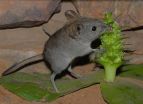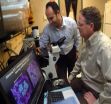(Press-News.org) CINCINNATI—Researchers at the University of Cincinnati (UC) have found that fat around the outside of arteries may lead to the development of cardiovascular disease and could be linked to its onset in individuals with diabetes.
David Manka, PhD, a researcher in the division of cardiovascular diseases, and his team found that this fat—known as perivascular adipose tissue—could possibly lead to the formation of fatty buildup inside of arteries and could cause existing buildup to break loose, leading to stroke or heart attack.
These findings are being presented at the American Heart Association's Russell Ross Memorial Lectureship in Vascular Biology: Emerging Concepts in Vascular Disease on Nov. 16.
"Obesity is a growing problem, but most information that is coming from scientists and clinicians involves visceral adipose tissue—or the beer belly—which leads to a higher risk of cardiovascular disease," Manka says. "The fat that grows around the larger arteries throughout the body has been largely ignored. With this study, we wanted to see if it had any effect on the onset of cardiovascular disease, particularly in diabetics or those who are at risk."
Manka and his team transplanted fat tissue around the arteries of knockout mouse models that were predisposed for cardiovascular disease and diabetes.
"Your typical mouse doesn't naturally have that perivascular adipose tissue outside of the artery," he explains. "We found that disease and buildup formed right inside of the artery next to the transplanted fat in these mice models. Besides the disease, we found that this fat tissue caused smaller blood vessels to grow around the larger blood vessles, called the vasa vassorum, which we don't see otherwise. Both of these effects are local effects on the adjacent artery."
Manka says this is the first time this development has been observed.
"Before this, we didn't know which came first—the vasa vassorum formation or the fat formation in the arteries," he says. "If you don't have the fat outside of the vessel, you won't have the activation of the vasa vassorum, which is thought to cause fat deposits to rupture, leading to stroke or heart attack. We are trying to establish cause and effect between the vasa vasorum and plaque instability, and now we have the model to test this."
Manka says these results show that perivascular fat is sensitive to metabolic cues and could be the link between metabolic dysfunction and vascular disease.
"This may be one of the reasons diabetics have increased rates of cardiovascular disease," he says. "We still don't know exactly what that link is. The perivascular fat is sensing these metabolic stimuli and is becoming dysfunctional itself, translating to local inflammation of vessel."
Manka says the next step for researchers is to identify the molecular pathways that are differentially regulated in the various kinds of fat to see which cause disease and which are linked to inflammation.
"We can then try to find ways to target them and stop or reverse the adverse effects of this perivascular fat on vascular disease," he says. "These findings will help us discover targeted therapies and may lead to quicker diagnosis, impacting the way physicians diagnose and treat cardiovascular disease."
INFORMATION:
This study was funded by the National Institutes of Health.
END
The increase in the legal age of sexual consent from 14 to 16 years in 2008 may not be protecting those at greatest risk, according to researchers who have analyzed British Columbia population-based data and recommend additional strategies to safeguard vulnerable children and teens.
In the first study of its kind in Canada, researchers from the University of British Columbia and Simon Fraser University tested the government's reasons for changing the law. Their findings are published in the current issue the Canadian Journal of Human Sexuality.
According to the study's ...
Risø Energy Report 9 lists a wide range of energy technologies in the market with low or no emissions of greenhouse gases, describing how several of these will be made commercially available in the next decades.
However, it is not possible to make the world's energy supply CO2-free as cheaply as possible, using only technology development in the current energy systems. There must be room for technological leaps and there is a need for an integrated process to optimise the entire energy system, from energy production, through transformation into energy carriers, to energy ...
Long-nosed Cape rock elephant-shrews are fond of sticky treats, according to Dr. Petra Wester from the University of Stellenbosch in South Africa. Her investigations show for the first time that the elephant-shrew, Elephantulus edwardii, licks the nectar of the flowers and pollinates the Pagoda lily. Her results are published in Springer's journal, Naturwissenschaften – The Science of Nature.
Dr. Wester studied the behavior of the animals in the northern Cederberg area of South Africa, where Pagoda lily plants, Whiteheadia bifolia (Hyacinthaceae), are found in shady rock ...
CINCINNATI—University of Cincinnati (UC) researchers have discovered a new protein that could be cardioprotective during heart attack, potentially leading to more targeted treatments for patients at risk.
These findings are being presented at the American Heart Association's (AHA) Scientific Sessions in Chicago Nov. 16.
Researchers in the department of pharmacology and cell biophysics, led by Chi Keung Lam, a PhD student, and Wen Zhao, PhD, under the direction of Litsa Kranias, PhD, AHA distinguished scientist and chair of the department, found that HAX-1, an anti-cell ...
For Immediate Release – November 16, 2010 – (Toronto) – A new study from the Centre for Addiction and Mental Health (CAMH) has found that 29,000 Ontario students from grades 7-12 report behaviours indicating that they are gambling problematically. The study also found that more than two-thirds of these students reported problems with substance use and/or alcohol use, and 25% reported a suicide attempt in the past year.
The Ontario Youth Gambling Report looked at self-report data from over 9,000 students across Ontario to monitor trends and areas for concern regarding ...
Dr. Joseph Glavy at Stevens Institute of Technology studies the smallest and most basic elements of life. The Assistant Professor of Chemical Biology runs the Glavy Lab, where advanced student scientists study the nuclear pore complexes (NPCs) in cells, observing the minutest mechanisms of life as they unfold during mitosis. The Glavy Lab's formal purpose is to study the NPC at the molecular level in the pursuit of the unknown or unexpected in the well-studied but not always well-understood nuclei of living cells.
His team has uncovered a disease-related protein outside ...
A new study revealed that the novel self-expanding super-elastic all-metal endoprosthesis stent (SESAME StentTM) used in patients undergoing angioplasty of degenerated saphenous vein graft (SVG) lesions has 100% acute success, low 30 day major adverse cardiac events (MACE) rates, and 9-month patency comparable to balloon expandable stents without embolic protection. Results of the study are published in the November issue of Catheterization and Cardiovascular Intervention, a peer-reviewed journal from The Society for Cardiovascular Angiography and Interventions.
Percutaneous ...
Two essential genes that control the accumulation and detoxification of arsenic in plant cells have been identified. This discovery is the fruit of an international collaboration involving laboratories in Switzerland, South Korea and the United States, with the participation of members of the National Centre of Competence in Research (NCCR) Plant Survival. The results presented are a promising basis for reducing the accumulation of arsenic in crops from regions in Asia that are polluted by this toxic metalloid, as well as for the cleanup of soils contaminated by heavy metals. ...
Scientists are learning more about how protein gets in the urine when the kidneys begin to fail and how a new drug blocks it.
"We have known for a long time that renal failure comes with protein in your urine, especially in diabetes," said Dr. David Pollock, renal physiologist at the Medical College of Georgia Vascular Biology Center. It's also known that a new class of drugs called endothelin A receptor antagonists reduce protein in the urine.
New research published in the journal Hypertension connects the two, providing more information about how new drugs under study ...
WASHINGTON — The United States is missing significant opportunities to reduce traffic fatalities and injuries, and could save lives by implementing a more rigorous, comprehensive program that adopts successful safety practices from other countries, says a new report by the National Research Council.
The committee that wrote the report reviewed traffic safety practices and strategies in high-income countries around the world and compared them with those in the United States. From 1995 to 2009, fatalities dropped 52 percent in France, 38 percent in the United Kingdom, ...

